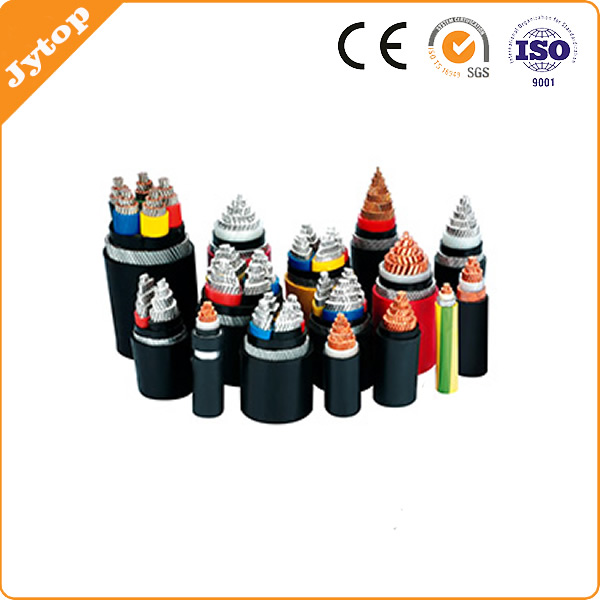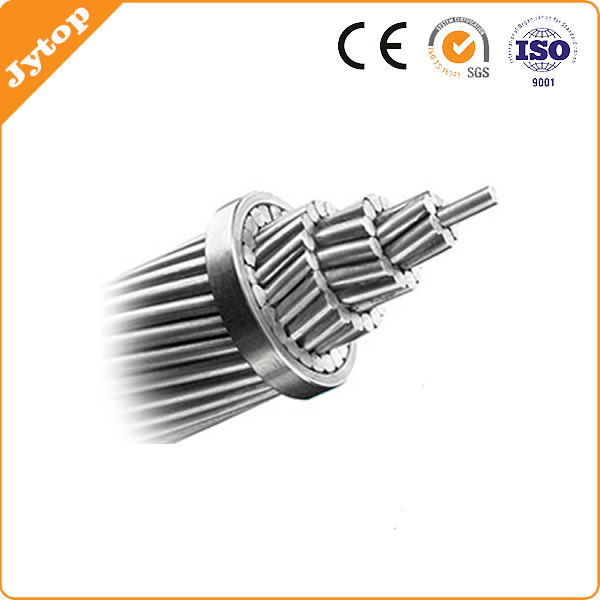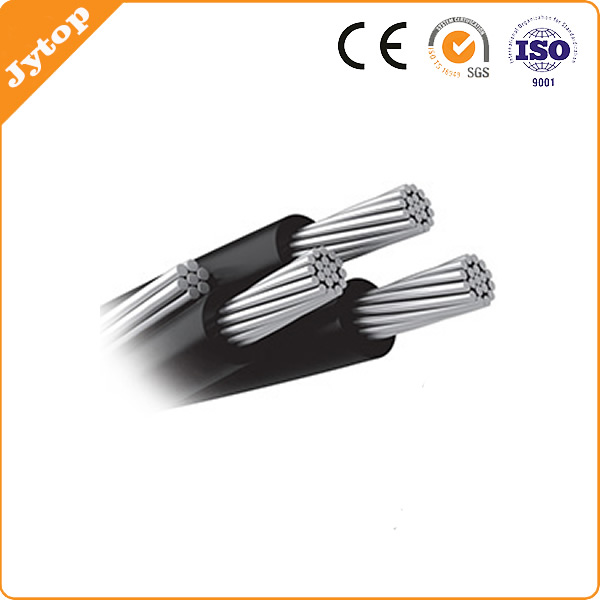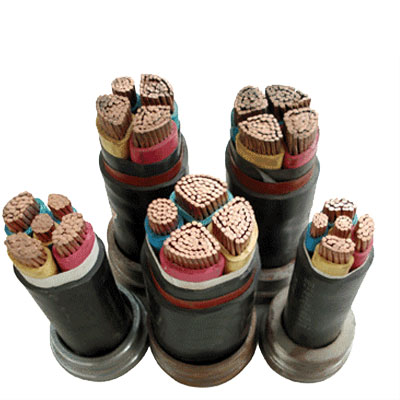advantages and disadvantages of overhead and underground cables

Power Cable
Power cables are mainly used for power transmission and distribution purpose. It is an assembly of one or more individually insulated electrical conductors, usually held together with an overall sheath. The assembly is used for transmission and distribution of electrical power. Electrical power cables may be installed as permanent wiring within buildings, buried in the ground and run overhead or exposed.……Including: rubber cable, welding cable, URD cable, XLPE insulated power calbe etc.

Bare Overhead Conductor
Bare Overhead Conductors are used in overhead transmission and distribution network applications.They are also used for un-insulated hook ups, jumpers, grounding conductors and other applications. Our Conductors conform to ASTM, IEC, BS, BS EN and DIN standards.…… Including: AAC conductor, AAAC conductor, ACSR conductor, ACAR conductor, AACSR conductor, etc.

Aerial Bundled Cable
Aerial bundled cables (also aerial bundled conductors or simply ABC) are overhead power lines using several insulated phase conductors bundled tightly together, usually with a bare neutral conductor. Our abc calbe conform to ASTM, IEC, SANS standards.……Including: abc cables, cvered line wire, service drop wire etc.
A comparison of Overhead and Underground…
However, they have significant disadvantages. Overhead … Underground transmission due to cables is costlier than overhead transmission as the ground needs to be excavated. … Advantages of Three Phase Power over single Phase power.
What are the advantages and disadvantages of…
Overhead power cables are cheaper to install and maintain than underground power cables. They are also quicker to fix whenever faults develop. However …
What are the advantages and disadvantages of…
Dec 9, 2009 … The shunt capacitance is greater with underground cables than it is with overhead, and at the same time, the series reactance is lower. That’s a …
Comparison of overhead and underground…
Jan 20, 2016 … Comparison of overhead and underground transmission lines. … that they are easier to repair if damaged Disadvantages: Main problem is …. The main advantages of underground cables are: • Reduced visual impact.
Overhead and underground transmission cables -…
Apr 28, 2015 … In this video, we compare the advantages and disadvantages of placing high- voltage power cables overhead (via pylons) or underground.
Overhead or Underground A Comparison – Division of…
Professional Background. • Professional Experience. • Video. • Advantages of Underground Cables. • Disadvantages. • Photographs OH Lines and UG Cables …
Undergrounding – Wikipedia, the free encyclopedia
Undergrounding is the replacement of overhead cables providing electrical power or … Underground cables can transmit power across densely populated or areas … The advantages can in some cases outweigh the disadvantages of the …
Comparing overhead and underground cables by – US…
May 7, 2013 … A powerpoint describing the advantages and disadvantages of using overhead and underground electrical cables.
What are Overhead power cables advantages and…
Advantages= The main advantage is that they are easier to repair if damaged ( Usually just go … Lose less energy then if they were underground as they do not have any good conductors near them to transfer energy away as easily; Cheaper …
GCSE P1 1.4.2 The National Grid.pdf – Saint…
OVERHEAD POWER LINES OR UNDERGROUND CABLES? DISADVANTAGES OF OVERHEAD POWER TRANSMISSION. •. VISUAL POLLUTION. They are a …
Download File – Year 11 Revision
Outline the advantages and disadvantages of both overhead transmission cables …. overhead and underground transmission cables that carry the same current.
What are the main benefits of underground cables?…
Mar 30, 2015 … Underground cables are – at installation – more expensive than overhead lines and for this reason, EHV underground cables are rarely …
What are the advantages and disadvantages of…
Aug 29, 2011 … What are the advantages and disadvantages of burying power lines versus running them above ground? … However, there are similar risks underground from storm surges. Moreover, the air surrounding overhead power lines serves … a significant amount of energy can be stored between the two cables.
What are the pros and cons of underground power…
Apr 14, 2015 … Overhead Lines: Pros: * Less expensive initial cost (dielectric is… … Underground power delivery is less efficient because buried cables have lower … What are disadvantages of interconnecting overhead power line with …
underground cables and distribution system – power…
Jan 31, 2010 … Some other advantages of underground power cables: … overhead power lines, and the life-cycle cost of an underground power cable is two to … The advantages can in some cases outweigh the disadvantages of the higher …
Underground vs. Overhead Transmission and…
Jun 9, 2009 … Physical Limitations of … Underground line capacitance for power cables is far higher than overhead … Replacing overhead with underground lines will also … duration time and still keep the advantage of infrequent outages.
Summary of Electric Transmission Assessment Report…
an underground cable system that is operational in Alberta is 240 kV, and these … The advantages and disadvantages of combination overhead/underground …
The National Grid – Awkward Revision
Most of the new cables will be suspended from pylons and run overhead while the rest will be buried underground. Outline the advantages and disadvantages …
A Comparison of Overhead Line System,Underground…
Overhead Line System vs Underground Cable System … to discuss about comparison between overhead lines and underground cables.this also refers to the advantages and disadvantages of overhead power lines and underground cables.
Overhead line versus buried cable – 50Hertz…
In this controversial debate, the supposed advantages of laying underground cables as opposed to constructing overhead lines are … Nevertheless, underground cables have, in many cases, ecological and legal disadvantages which are …






















Leave a Reply